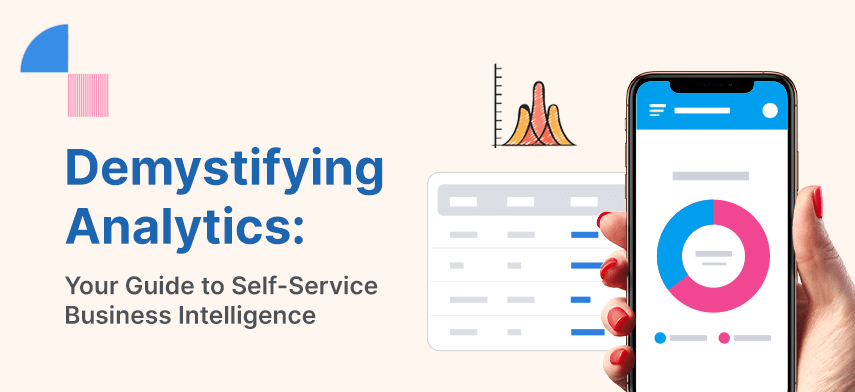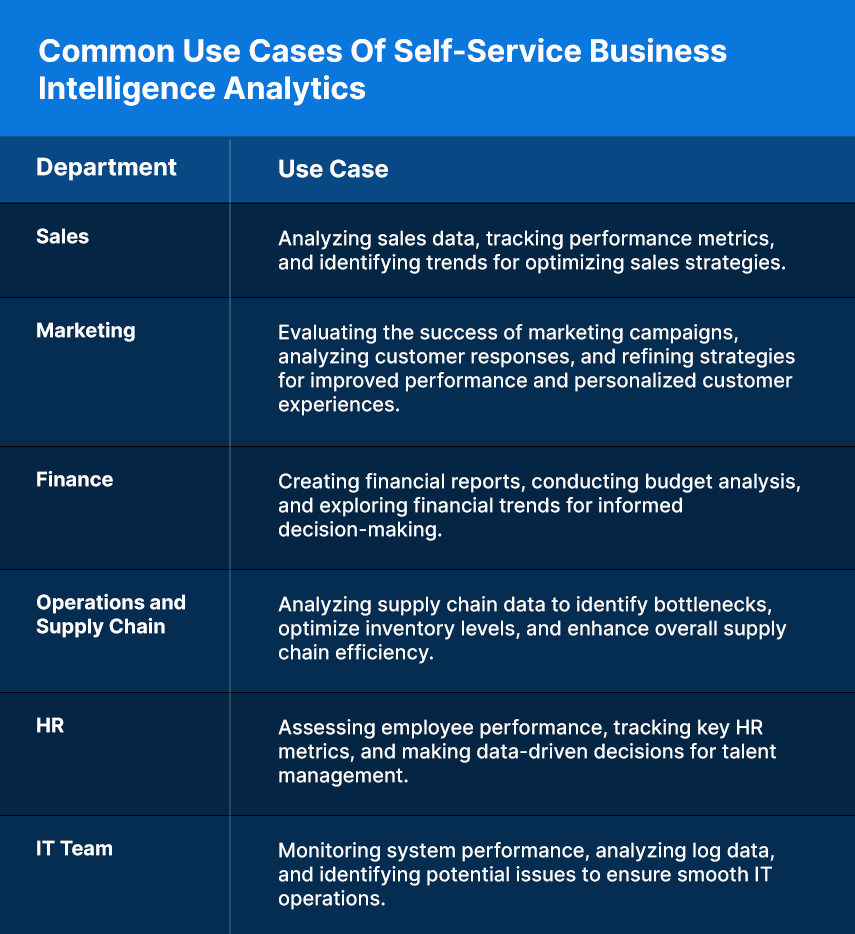Demystifying Analytics: Your Guide to Self-Service Business Intelligence
 Mobisoft Infotech
Mobisoft InfotechDemystifying Analytics: Your Guide to Self-Service Business Intelligence
The sheer volume and diversity of data have transformed the way organizations operate. Managing and making sense of this diverse dataset requires tools and approaches that empower businesses across different departments to derive insights independently. To effectively harness the wealth of minute details buried within the datasets, the concept of self-service analytics has emerged as a transformative force. Let’s delve into the intricacies of the same, exploring the fundamental principles, key features, and the undeniable impact it has on the BI landscape.

What is Self-service Analytics?
Self-service analytics refers to a modern-day approach to business intelligence that empowers line-of-business professionals to conduct data queries and create reports without relying on IT or data experts for support. This allows them to access and analyze business data to extract meaningful insights and make data-driven decisions independently.
Unlike traditional methods where specialized data teams or analysts are primarily responsible for interpreting data, Self Service Business Intelligence (SSBI) and analytics provide tools and accessible insights directly to employees. Empowering non-technical users with BI means fostering a data-driven culture where users can confidently navigate, analyze, and derive valuable information. This approach bridges the gap between technical complexity and user-friendly empowerment in the realm of business intelligence.
Moreover, implementing self-service BI for small businesses can democratize data access and analysis, enabling decision-makers at all levels to make informed choices. Now, let’s explore some self service BI use cases across various departments.

Key Components and Features
The key components of self-service business intelligence analytics encompass a range of features and functionalities designed to be approachable, featuring basic analytic capabilities for users. Here are the key components:
An easy-to-use interface
Some user-friendly analytics tools are specifically designed to empower business users, regardless of their technical expertise, by simplifying the data analysis process.
Intuitive dashboards provide visual analytics of data. These user-centric dashboards are designed to make it easy for individuals with varying technical backgrounds to navigate and understand.
With drag-and-drop functionality, users can easily select and arrange diverse data elements. They can choose from a variety of charts, heatmaps, graphs, scatter plots, and other visual elements to represent data in a way that is most meaningful to them and their audience.
Users can see real-time or near-real-time data updates when they construct any report with the WYSIWYG editing features.
Pre-built templates help users streamline common data analysis tasks.
Customization tools provide flexibility in adjusting visual elements to match branding or reporting standards. Furthermore, interactive elements, such as tooltips, filters, and parameters, enhance engagement and informativeness.
Data Preparedness, Accessibility and Integration
Smart capabilities of self-service analytics tools empower users to navigate data complexities and create data discovery with ease. As a result, data analytics workflows become more efficient and accurate.
Tools provide data connectors to various sources, ensuring unified integration with databases and cloud services.
Users can cleanse, modify, and restructure business data with data-wrangling tools. It helps handle activities like eliminating duplicates and filling in missing values, making sure the data is ready for analysis.
Users can interactively query datasets, enabling filtering, sorting, and data transformation.
Collaboration features enable users to work together in real time, sharing data insights, dashboards, and analyses.
Users can merge various data origins like spreadsheets and cloud storage databases using self service BI software.
Automated ETL processes boost effectiveness by automating extraction, transformation, and loading operations, which minimize manual work and assure data coherence.
Data profiling feature also plays a crucial role in providing insights into data characteristics like distribution and types, aiding users in identifying and addressing data quality issues for well-informed decision-making.
Others:
Advanced Analytics and Predictive Modeling: Users can apply machine learning algorithms and statistical models without extensive technical expertise.
Security in Self Service BI: To ensure data security, these tools incorporate role-based access controls. These controls restrict access to sensitive information based on the roles.
Conversational Analytics: Integration with NLP allows users to interact using natural language queries, enhancing accessibility.
Mobile Accessibility: Designed with responsive interfaces, these tools offer flexibility for users to access and interact with data using mobile devices.
Training and Support Resources: To facilitate user adoption, these tools provide training resources and support materials, aiding users in navigating and utilizing the tool effectively.
Understanding these key components is essential for organizations looking to implement and leverage self service business intelligence and analytics effectively.
Read More: https://mobisoftinfotech.com/resources/blog/self-service-analytics
Subscribe to my newsletter
Read articles from Mobisoft Infotech directly inside your inbox. Subscribe to the newsletter, and don't miss out.
Written by

Mobisoft Infotech
Mobisoft Infotech
Mobisoft Infotech is a software product engineering company dedicated to providing value, quality, and lasting business expansion through digital innovation, change, and the adoption of technology. Our proficiency in digital technology encompasses Mobile, Cloud, DevOps, Web, IoT, AI, UI/UX, Testing, Robotic Process Automation, and various other digital transformation services, catering to companies across a wide range of industries. With more than ten years of experience in constructing digital solutions, offering consulting, and handling outsourcing, Mobisoft has assisted clients from over 30 countries in embracing digital transformation, capitalizing on market prospects, and attaining sustained outcomes.
